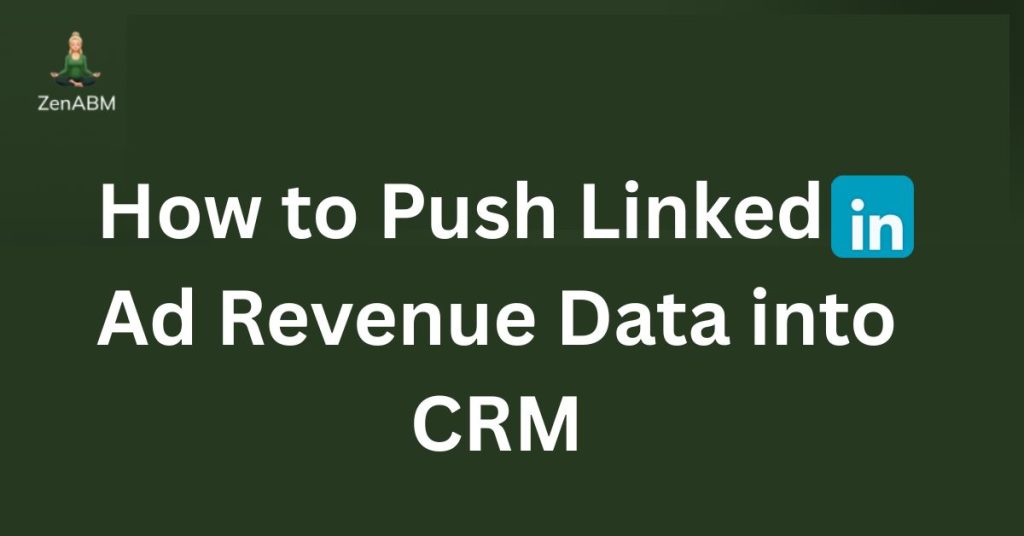Manually combing through long lists of companies that viewed your LinkedIn ads, cherry-picking the most engaged, exporting a CSV, uploading that file to your CRM so sales knows who to work with, then later tying every closed deal and new opportunity back to ad engagement for reporting,
All of this becomes a grind as your ABM program scales.
If you want a reliable way to push LinkedIn ad revenue data into CRM and automate the entire loop, you need a direct sync between LinkedIn and your system of record.
In this guide, I will show you how to set that up using ZenABM, end-to-end.
How to push LinkedIn ad revenue data into CRM: short summary
Doing the process by hand is error-prone. CSV shuffles, manual campaign matching, and keeping sales aligned consume time and create mistakes.
Native CRM connectors, including HubSpot’s built-in option, expose only high-level numbers such as spend and CTR. They do not deliver company-level impressions, engagement visibility, or a clean map from ad exposure to deals.
ZenABM closes that gap. It provides a two-way sync between LinkedIn Ads and your CRM, built for ABM teams, with features such as:
- Company-level engagement per campaign: Pulls company-specific impression and click signals directly from LinkedIn’s API, something native CRMs do not provide.
- First-party signals, not guesses: No reverse IP, no cookies. ZenABM reads from LinkedIn’s official API for accurate and compliant data.
- No bot pollution: Cuts out false activity that plagues display networks and third-party deanonymization tools.
- Real-time scoring: Scores accounts by recent campaign engagement and updates HubSpot ABM stages automatically.
- Automatic BDR assignment: Sends high-intent companies to the right rep in HubSpot without manual routing.
- Pushes engagement into company records: Writes campaign-specific engagement into structured text fields on HubSpot company objects.
- Intent by campaign group: Reveals which features and themes earn attention, without complex homegrown workflows.
- Direct link to pipeline: Connects LinkedIn engagement to closed won revenue so you can calculate ROI with confidence.
- ABM dashboards ready to use: Skip spreadsheets. See ROAS, influenced pipeline, ABM stages, and more immediately.
- Effortless retargeting: Know which companies saw which ads and launch precise follow-ups.
Why ZenABM’s LinkedIn ad sync beats native CRM integrations
Native LinkedIn ad integrations with CRMs, HubSpot included, fall short for ABM. Here is why using ZenABM to push LinkedIn ad revenue data into CRM outperforms native options.
Company-level engagement tracking for each campaign
LinkedIn Campaign Manager does not show which companies engaged with each specific ad, and that same limited view flows into CRMs like HubSpot. It is not enough for ABM.
For instance, HubSpot’s bundled integration shows only broad, aggregated metrics:
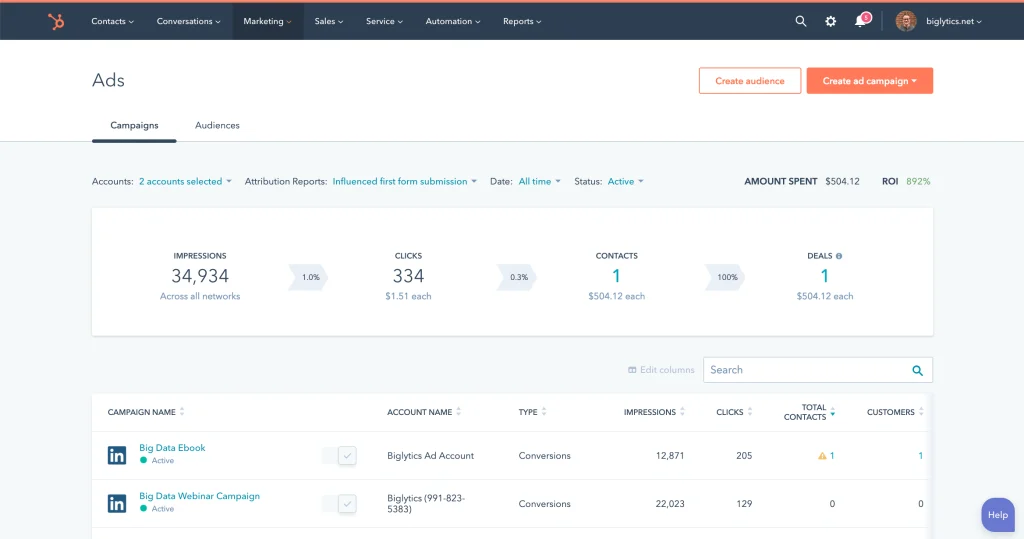
ZenABM fixes this by exposing company-level engagement for each campaign or campaign group:
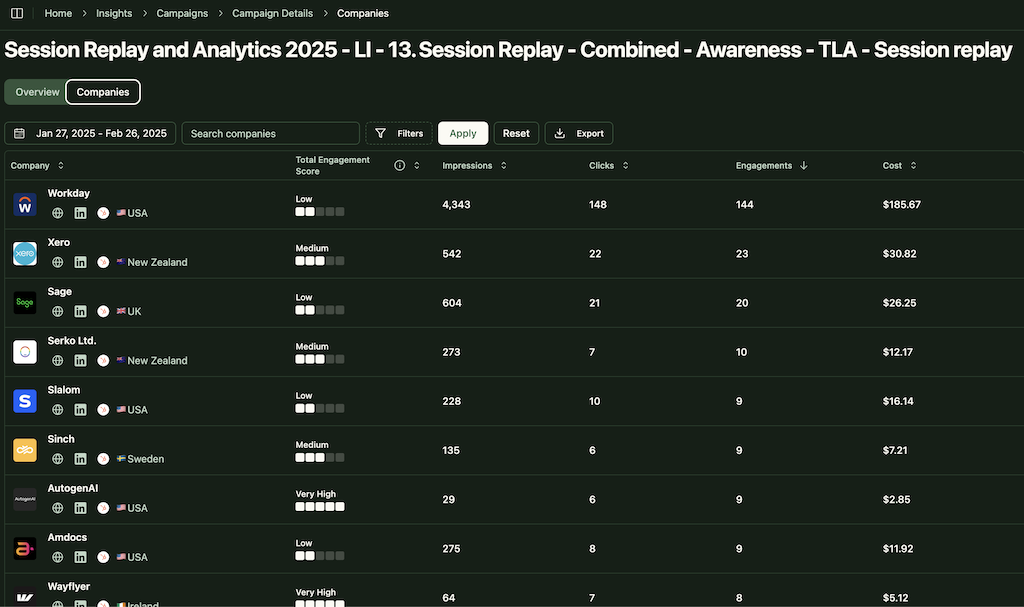
Accurate first-party data through LinkedIn’s official API
Because HubSpot and Campaign Manager do not provide campaign-specific company-level engagement, many teams try third-party workarounds. Those come with issues that ZenABM avoids.
Website visitor identification tools
Most visitor reveal products only work after a click, which means they miss anyone who saw the ad but never visited your site.
Tools such as RB2B, Warmly, and Demandbase typically depend on reverse IP lookup. They match an IP to a company using various databases. That only identifies a company, not a person, and the match is unreliable.
If a buyer uses a VPN or a shared network, the IP may map to the wrong organization. That makes the data weak for confirming true LinkedIn ad engagement.
According to a Syft study, Clearbit ranks among the better options, yet precision is still around 42 percent.
Additionally, as Kyle Ackerman notes in her LinkedIn post, many companies do not even register static IP addresses:

Since these tools provide vague company-level signals, lack reliability, and completely miss accounts that viewed your ads without clicking, it is smarter to shift to first-party intent.
ZenABM fills this need by pulling company-level engagement for each campaign straight from LinkedIn’s official API.
This gives you:
- High accuracy from the source
- Full compliance with LinkedIn policy
- Visibility into impression-only exposure, even without clicks
Display ad networks and behavioral matching
Some teams also lean on display networks such as AdRoll or Criteo.
These platforms watch users across sites with third-party cookies and device fingerprints, then attach that activity to DMP profiles to guess company, industry, or role.
That approach is fading fast because:
- Third-party cookies are being phased out by Google
- Behavioral profiles drift when people change jobs or companies
- Bot traffic mimics people and distorts metrics
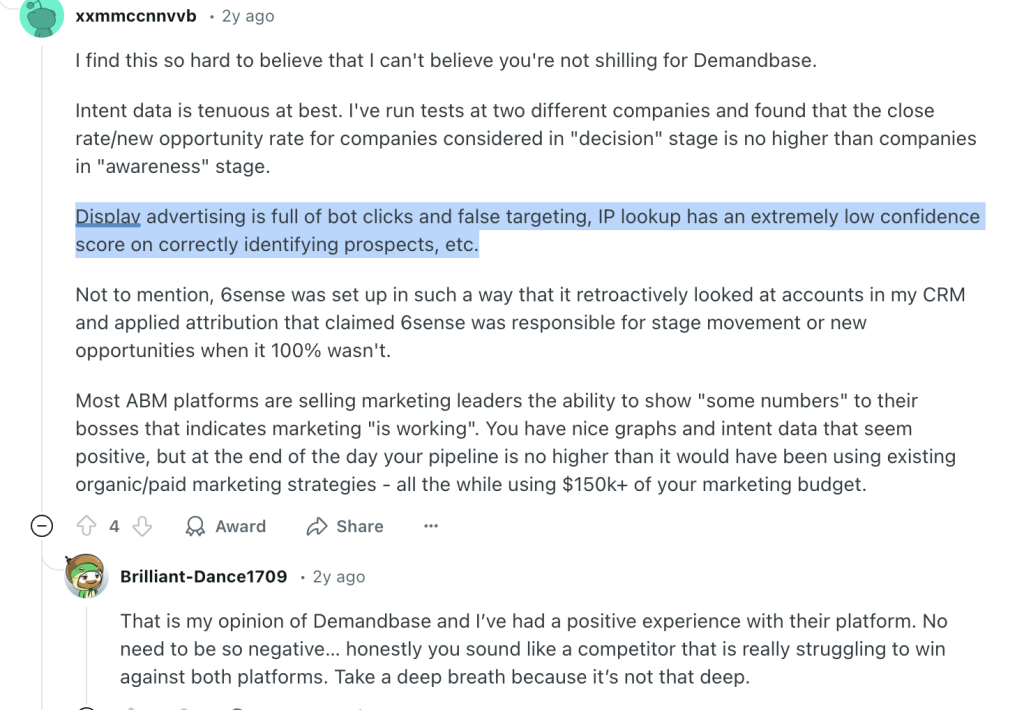
Like deanonymization, display-based matching has hard limits. ZenABM avoids these by sourcing company-level engagement per campaign from LinkedIn’s API.
That means:
- No bot noise
- No cookie reliance or behavioral guessing
In short, third-party tools infer who engaged. ZenABM retrieves verified data from the origin.
Lead scoring from ad engagement
Scoring is a pillar of ABM.
It helps BDRs focus on accounts that show real interest rather than chasing cold names. HubSpot’s ads tool does not include scoring, which forces teams to build complex flows.
ZenABM handles scoring automatically. It evaluates each account by current LinkedIn ad activity, not only past history. You get a real-time “Current Company Engagement Score” for a window you choose, such as the last seven days. Your hottest accounts bubble up, and ABM stages update in HubSpot without manual work.

Automatic BDR assignment to engaged accounts
ZenABM tightens the marketing and sales handoff.
Accounts marked as interested route directly to the right BDR, and the assignment syncs to HubSpot in real time:

HubSpot and similar CRMs do not ship this out of the box, so teams otherwise manage it by hand.
Push company-level engagement into a single company field with intent context
ZenABM bridges LinkedIn campaigns and HubSpot CRM with true company-level intent tracking. It collects impressions, clicks, and interactions for each campaign directly from LinkedIn’s API, then writes those metrics into one structured text property on the HubSpot company record. Sales and marketing can see intent signals at both the company and contact layers.
Take Userpilot as an example. They needed LinkedIn engagement by campaign inside HubSpot, which the native connector could not provide. ZenABM synced both the counts and the context, linking each company to specific campaigns inside HubSpot.
These values appear in HubSpot as properties such as “LinkedIn Ad Engagements, 7 days” and “LinkedIn Ad Clicks, 7 days” and they refresh at midnight.
Here is how it looks in the CRM once the sync completes:
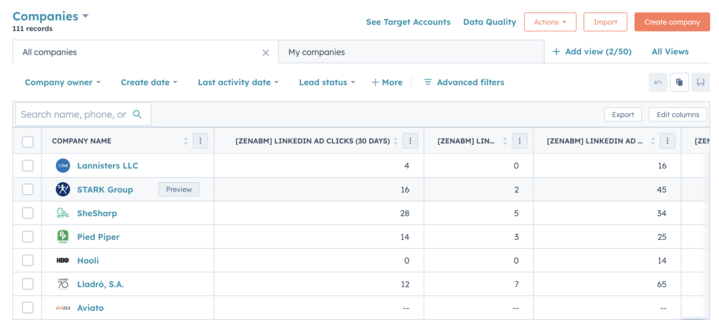
LinkedIn hides engagement for a company when interactions are fewer than three in a period. ZenABM handles this by aggregating at the campaign group level.
This gives your team full visibility into how each company interacts with every LinkedIn campaign without manual entry in HubSpot.
It becomes even more useful when campaigns reflect different use cases or pains. If a company interacts heavily with a “productivity enhancement” campaign and ignores “secure file sharing,” your BDRs know which value prop to lead with.
Recreating this intent framework natively in HubSpot would take hours or days. ZenABM provides it instantly.
Here is a peek at how complex a DIY workflow can look in HubSpot:
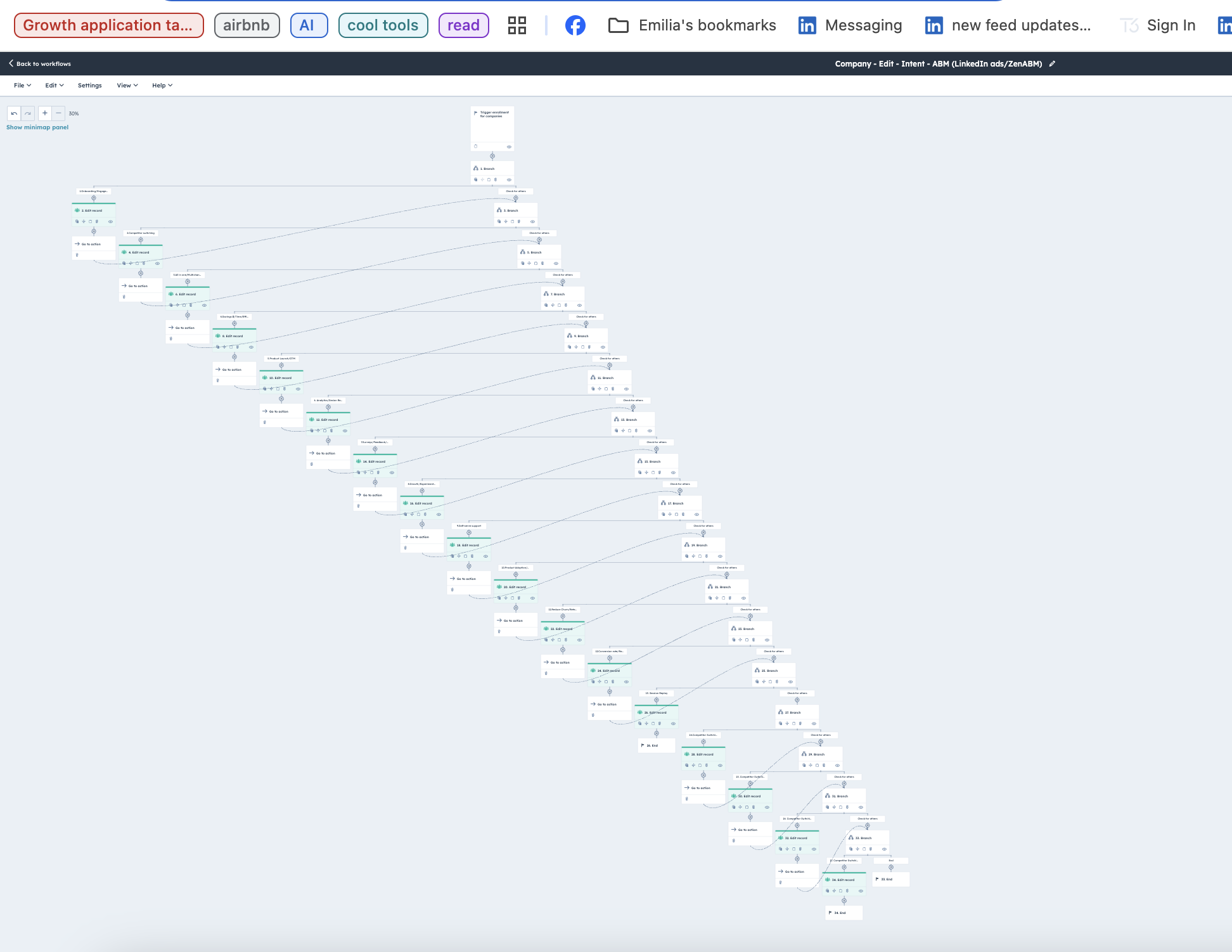
ZenABM gives you the finished version:
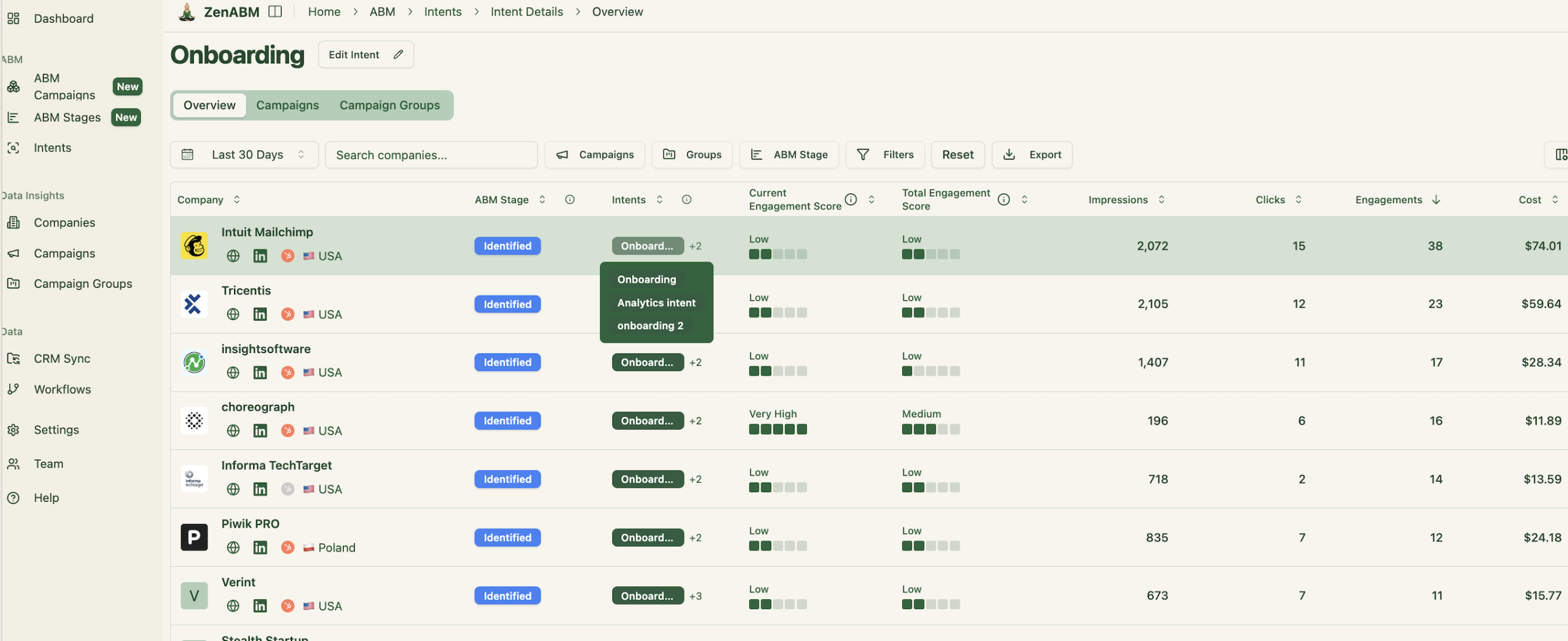
If you want tactical guidance on designing LinkedIn campaigns that surface feature or use case preferences, read our guide on running ABM on LinkedIn.
Connect LinkedIn campaigns directly to the pipeline and revenue
With its two-way sync between LinkedIn Ads and HubSpot, ZenABM maps engaged companies to deals in your CRM.
You get a clear view of how LinkedIn activity creates a pipeline, and you can track ad spend ROI with confidence.

Plug and play insights with an ABM dashboard
ZenABM ships comprehensive dashboards for account intent and ABM effectiveness:


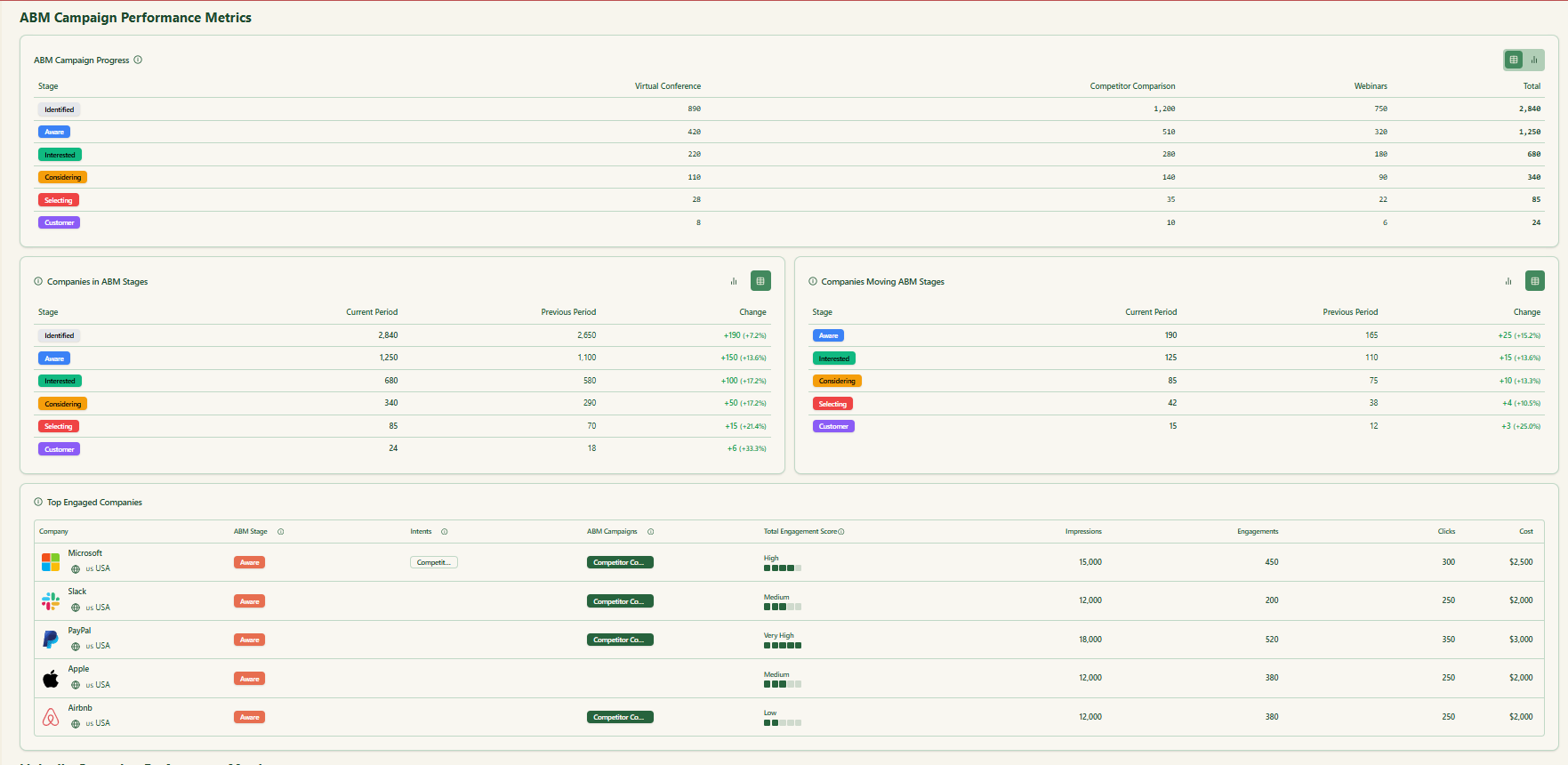
ABM Stage Tracking
ZenABM also tracks the ABM stage of each account based on CRM data plus LinkedIn ad engagement metrics, and the thresholds for each stage are customizable:
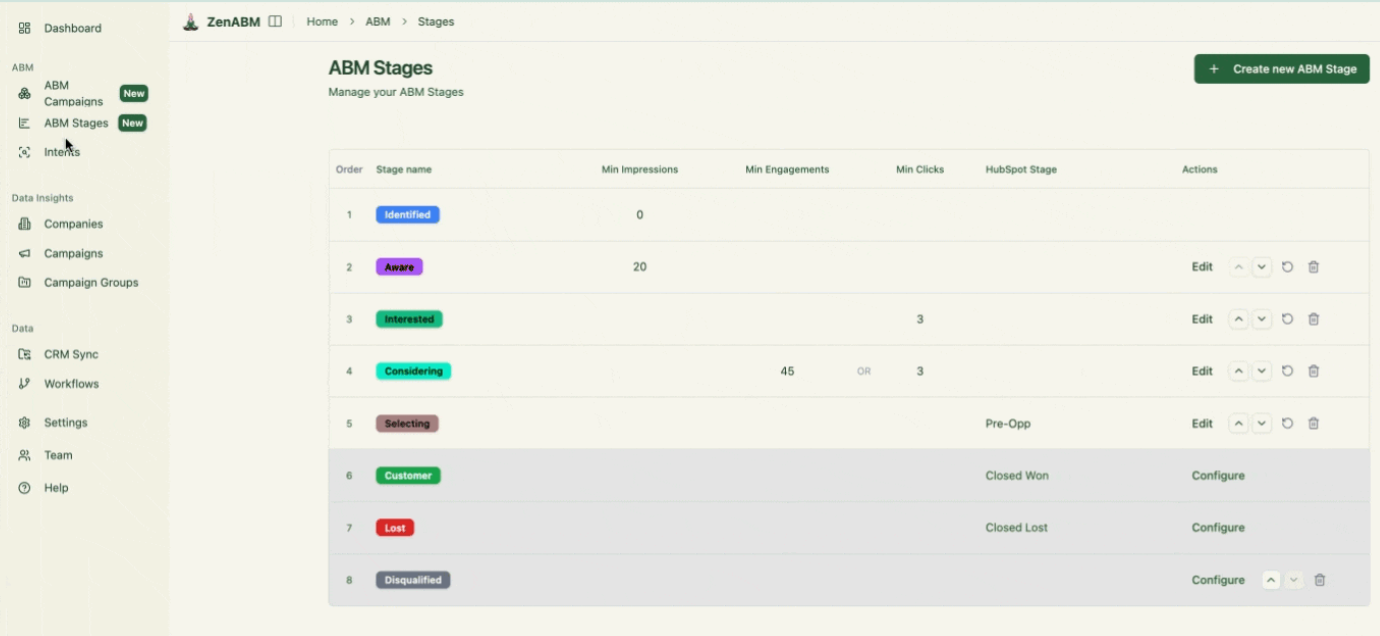
Effortless retargeting for ABM
ZenABM reveals which companies engaged with each campaign or campaign group, which makes retargeting simple and precise.
Try this sequence:
- Group your first LinkedIn ads by use case.
- Use ZenABM to identify which companies engaged with which campaigns.
- Cross-check those accounts against live opportunities in HubSpot.
- Retarget top accounts with creative that reflects their interests.
How to set up LinkedIn Ads to HubSpot integration using ZenABM
Ready to push LinkedIn ad revenue data into CRM in minutes? Follow these steps:
- Sign up for ZenABM with your work email and verify it.
- Click “Continue setup,” then choose “Connect LinkedIn”:
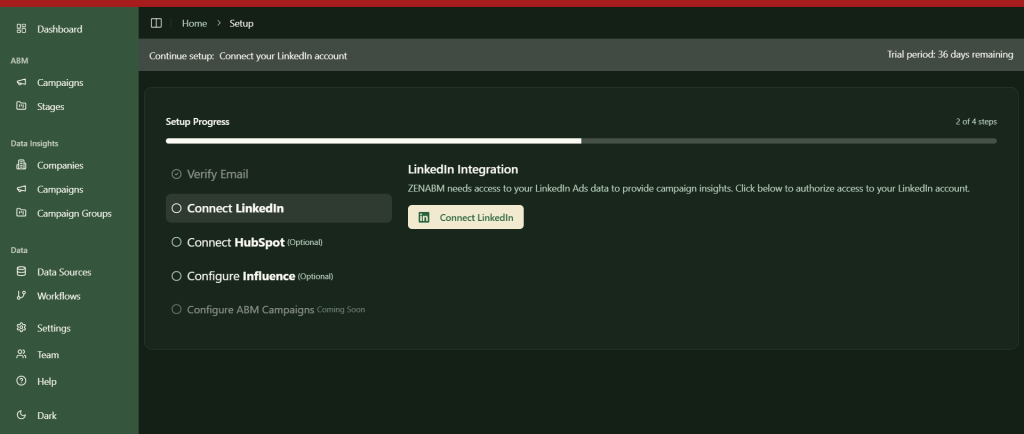
- Sign in with your LinkedIn credentials and complete verification:
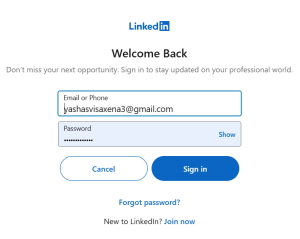
- Back in ZenABM, select the LinkedIn ad account to integrate:

- Click “Connect HubSpot,” sign in to HubSpot, and pick the correct CRM account:
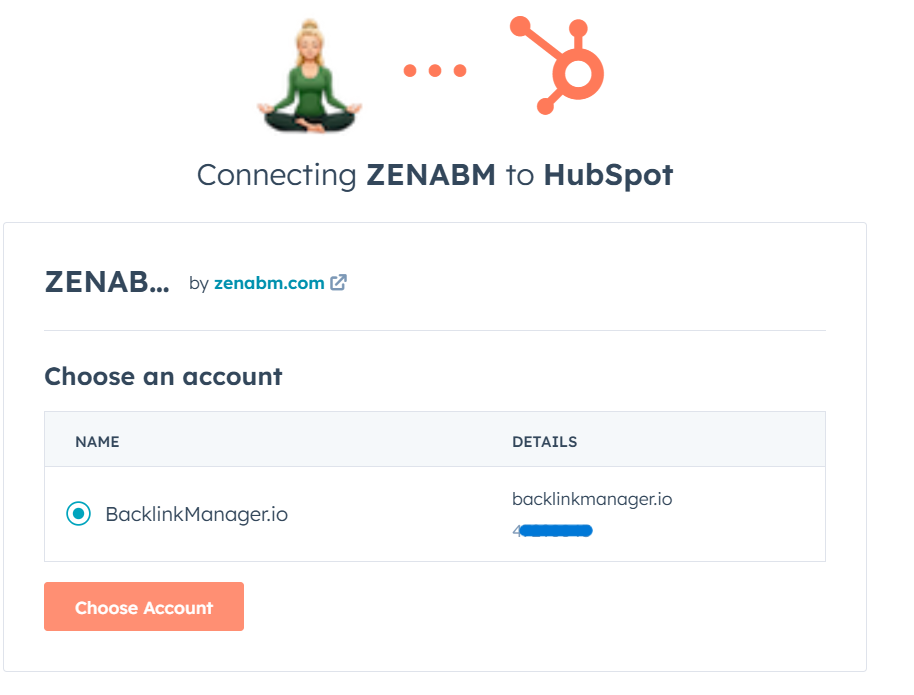
- Choose the minimum number of impressions needed before a deal is marked as influenced by a LinkedIn campaign. This filters out low signal activity:
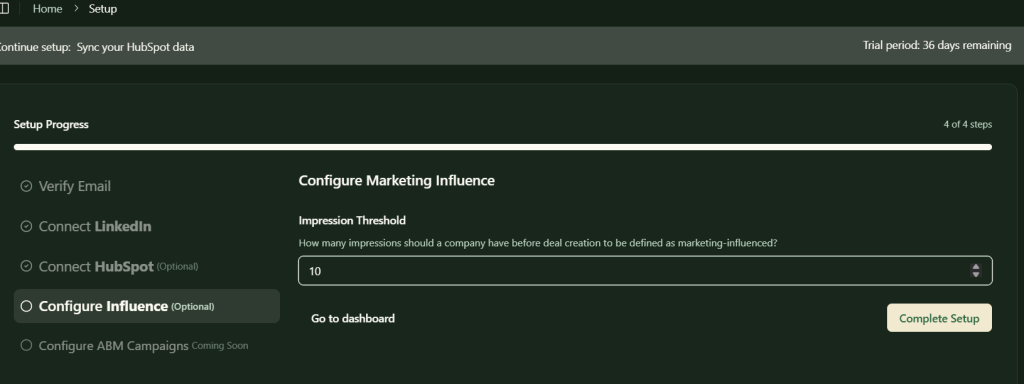
When you finish these steps, your LinkedIn Ads to HubSpot connection is live. Company-level engagement for each campaign will sync to your CRM automatically.
Over to you
Pushing LinkedIn ad revenue data into CRM by hand is painful. Native connectors such as HubSpot’s leave out the most important view, which is company-level engagement by campaign. ZenABM fills the gap with verified signals from LinkedIn’s API, no reverse IP tricks and no guesswork.
It adds automated scoring, real-time BDR routing to high intent accounts, and seamless sync into HubSpot. It also closes the loop between LinkedIn campaigns and closed won revenue with built-in attribution views.
Ready to trace every rupee of ad spend to pipeline and revenue inside your CRM? Try ZenABM and turn engagement into clear, defensible revenue reporting.
If you want to learn more, book a demo.

